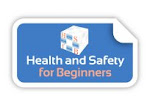Health and Safety Courses Giveaway
NO Catch – NO Fee – Enter Now
IT’S FREE!!
Health and Safety for Beginners (HSfB) is a free information website for assisting those entering or progressing a career in the health and safety field, by providing downloads, revision aids, toolbox talks, legislation updates, health and safety news, friendly online discussion forums and much more. Not only is the website free, but HSfB are giving away free health and safety courses in conjunction with The Rapid Results College (RRC); IonActive; Express Park HSEQ Director and HSfB discussion forum moderator - Gladiator; She Knows Health & Safety; Smart Training Solutions; and Safety Photo, in a free to enter prize draw within their website at www.healthandsafetytips.co.uk
The free to enter prize draw is a gift from the owner, John Johnston, to anyone in the UK wishing either to enter, or further their career in the field of health and safety. His motives are simply those of his passion to keep workers free from accident, injury or ill-health in all sectors.
The free draw, launched on 5 November 2006, will run until 31 December 2006 where all entrants will be placed “in the hat” and winners drawn by an impartial member of a renowned health and safety establishment.
The prizes on offer are:
- NEBOSH National General Certificate – e-learning.
- NEBOSH Certificate in Fire Safety and Risk Management - e-Learning.
- Radiation Protection Supervisor (RPS) Training Course (2-day residential).
- Guided Tour of a large multi-national organisation.
- NVQ Level 4 OR NVQ Level 5.
- IOSH Working Safely for up to ten people in Manchester.
- Books
- The Handbook of Health and Safety Practice by Jeremy Stranks
- The Principles of Health and Safety at Work by Allan St John Holt
http://www.healthandsafetytips.co.uk/Draw/Prize_Draw.htm
With nothing to lose and everything to gain, why not visit www.healthandsafetytips.co.uk and place your entry today.
